Content from the Brookings Doha Center is now archived. In September 2021, after 14 years of impactful partnership, Brookings and the Brookings Doha Center announced that they were ending their affiliation. The Brookings Doha Center is now the Middle East Council on Global Affairs, a separate public policy institution based in Qatar.
Among the elements of Iran’s regional policy, its idea of national security is the most unconventional and challenging. Iran operates not only as a state, but also as an identity group and security network, says Galip Dalay. This article originally appeared on Robert Bosch Academy.
The so-called Iran Question has Europe bitterly at odds. On 13-14 February, Warsaw hosted a major international summit on Iran with the goal of forging an anti-Iran international coalition. Indeed, the choice of location is not surprising given the affinities between the arch-conservative Polish government and the Trump administration in the U.S. One of the major aims of this summit appears to be to break the European orthodoxy on Iran, which includes its objection to the U.S.’s scratching of the nuclear power agreement with Iran, the Implementation of Joint Comprehensive Plan of Action (JCPOA). In contrast, Germany, France, and Britain have recently established the Instrument in Support of Trade Exchanges (INSTEX), an EU-backed mechanism that aims to facilitate trade engagements with Iran by helping European companies avoid the unilateral U.S. sanctions on Iran. These contrasting pictures illustrate the European paradox on Iran.
European diplomacy takes place at a symbolic moment for Iran. JCPOA came into effect three years ago in January 2016. Also, we are marking the 40th anniversary of the Islamic revolution in Iran. After mass protests, the Shah fled the country to Egypt in January 1979 and Ayatollah Khomeini returned to Iran from France in February 1979, ending Iran’s long tradition of royal rule. This thrust Iran onto the Cold War and post-Cold War international agenda, and the Iran Question has remained there ever since, particularly in the West.
What is the Iran Question?
In reference to Iran, three different conceptualizations and types of framing come to the fore.
For neo-conservative circles in the U.S., Iran is first and foremost an ideological and political menace, not just a straight-forward geopolitical challenge. This view focuses on what the Iranian regime is rather than what Iran does. This standpoint is informed by historical, ideological and political factors. The revolution happened in a staunchly pro-U.S. state. Moreover, the revolutionary students stormed the U.S. embassy in Tehran in November 1979, taking hostage more than 60 employees of the embassy for 444 days. This has contributed significantly to the U.S. security and foreign policy establishment’s enduring view of Iran.
This camp’s solution of choice is regime change. Yet there doesn’t appear to be a consensus on how to bring it about: through direct military confrontation or the engineering of a domestic political collapse as happened in the Soviet Union in 1991. Though not excluding the former completely, Iranian political elites appear to believe that the U.S. is poised to apply the Soviet model to Iran. The preferred means appear to be putting severe sanctions on Iran’s banks, financial infrastructure, and missile program; creating an international anti-Iran coalition; aiding the domestic opposition inside Iran; and aligning with Iran’s regional foes. Yet, the more the U.S. pushes for regime change, the more the regime can use this to rally the public around nationalism, anti-imperialism, and to a lesser degree Islamism. The unpopularity of the U.S. main regional allies, Saudi Arabia and Israel, is another opportunity for Iran to use this specter as a mean to consolidate on the domestic front, which is otherwise crumbling and fracturing. Iran and its foes suffer from high levels of mutual addiction, which aids their respective political and ideological agendas.
The second view reduces Iran to a discussion on its nuclear program and bombs. This view doesn’t only equate Iran with bombs, it also frames the bomb in ideological terminology. Iran wasn’t developing nuclear bombs, it was developing “Islamic bombs.” Yet this reductionist understanding of the Iranian question leads to a narrow understanding of what should be viewed as progress on Iran. Progress on the nuclear file was immediately translated into progress on the Iranian file. This was, arguably, one of the major shortcomings of President Obama’s policy toward Iran. It looked at Iran through the lens of its nuclear program. The JCPOA, or nuclear deal, was thus to some extent perceived as the resolution of the Iran Question.
JCPOA was a multilateral deal that was built around a core bilateral framework between the U.S. and Iran, and thus the deal can’t survive without U.S. participation. For Iran, the deal served the purposes of the de-securitization and normalization of Iran’s geopolitical identity, as well as having other benefits, particularly the economic ones. Yet, in spite of the prospect of the effective demise of the JCPOA and re-imposition of the sanctions on Iran by the U.S., the de-securitization of Iranian geopolitical identity and normalization of its image in international system have already been partially achieved.
The third position frames Iran through its supposed quest for regional hegemony. This reading has many disciples in the Middle East, particularly in the Gulf. The alleged Shia crescent or Iran’s (Persia’s) new empire moment reflect such a reading of regional affairs and Iran’s place in it. One manifestation of this view is to ask Iran, along with Turkey, not to meddle in Arab affairs. Yet Middle Eastern political history doesn’t provide an encouraging picture for durable hierarchies among the states in the region, as also argued by Louise Fawcett of University of Oxford. The fragmented and poly-centric nature of today’s Middle East will make it difficult for any Middle Eastern power to lay claim to hegemony in any sustained manner. The dramatic shifts in the fortunes of Egypt, Iraq, Syria, and the changing perception of Turkey’s place in the Middle East over decades is a testament to the nature of shaky “hegemonies” in the region. What is being depicted as hegemony is mostly a snapshot of a specific period in regional affairs, not a long-lasting regional picture.
Iran’s idea of “network security”
Yet, among the elements of Iran’s regional policy, its idea of national security is the most unconventional and challenging. Iran operates not only as a state, but also as an identity group and security network. The way that Iran operates as a security network generates the most tension and creates anxiety across the region. But Iran’s idea of “network security” is under-appreciated outside of Iran, particularly in the West. This security network includes state and non-state actors: the Iraqi government, in particular pro-Iranian Shiite Hashd al-Shaabi; People Mobilization Units, an Iraqi state-sponsored umbrella organization composed of a large number of militia groups that are mostly Shia Muslim; the Assad government; Hezbollah; and Houthis in Yemen. This network operates as a state within the state, but also as a transnational network.
Therefore, there is a gap between our understanding of Iran’s security and Iran’s conception of its own security. There seems to be a consensus in Tehran on network security. Both the pragmatic and the conservative camps regard Iran’s maintenance of links, both in its physical as well as political terms, to Syria and Hezbollah as an integral part of Iran’s national security. Yet Iran’s such understanding of its security is what generates insecurity in neighboring countries. Such an expansive and expansionist conception of security can’t be attained without breaching the security of other actors and countries.
In response, an opposing coalition of the states and groups is attempting to break Iran’s regional network and alliance structure, and rollback its influence. This policy is visible on three fronts.
Firstly, Gulf countries, particularly Saudi Arabia, are increasingly making common cause with Israel and the Trump administration in curtailing Iran’s regional influence. On the part of Israel, this endeavor can get out of hand in Syria, particularly if the U.S. completely withdraws from the country. Breaking its rule of deniability, Israel has recently acknowledged that it has targeted the Iranian presence inside Syria. It is highly likely that Israel will continue to target Iranian positions inside Syria, as well as Hezbollah down the road in Lebanon. Depending on the nature of Iran’s response, the potential for a flare up is real.
Secondly, Arab Gulf states are revisiting their previous approach to the Arab Shia communities with a view to lure them away from the Iranian orbit into an Arab framework. Previously, these states focused more on these communities Shia (sectarian) rather than Arab (national) identities. This sectarian approach coupled with decades-long discrimination policies against these communities has pushed them into the arms of Iran.
Yet there appears to be a growing consciousness among the Gulf Arab elites (Sunnis) that this policy was self-defeating. It created natural constituencies for Iran in the Arab world, from the Gulf to Iraq to Yemen to Syria and to Lebanon. Thus, there is a change of course. Instead of putting emphasis on the sectarian (Shia) identities of these communities, these states now emphasize their common Arab bonds with these groups, while rejecting Iran as a meddlesome Persian country with hegemonic ambitions. To reflect this change, the previous talks of the Shia crescent are now leaving its place to the accusation of Iran’s (Persian) imperial ambitions in the Arab world. In addition, Saudi Arabia’s recent outreach to Shia political actors in Iraq, including Moqtada al Sadr, and the opening of its embassy in Baghdad – after more than a quarter century of broken ties – reflect this policy shift.
Contest for a new regional order
Thirdly, the U.S. is pushing to create an institutionalized anti-Iranian bloc in the region in the form of a Middle East Strategic Alliance, conveniently referred to as the Arab NATO. Six Gulf states plus Egypt and Jordan are forming part of this alliance, which is effectively stillborn given the divergence in threat perceptions of the constituent countries.
The Iran Question or different actors’ stance on Iran is intimately linked to their search for a new regional order. This is one of the reasons that despite the shared opposition to Iran’s expansionist regional policy and its idea of network security, these countries along with Turkey can’t make common cause regarding Iran. Instead of one, Turkey has two Iran policies. Both countries are unhappy about each other’s policies in their shared immediate neighborhood, particularly in Iraq and Syria. Despite this geopolitical incompatibility and unhappiness, Turkey perceives an even greater danger to emanate from the anti-Iranian bloc’s regional design. Turkey doesn’t see the feud between Iran and these countries in bilateral terms. Rather, Turkey sees this as part of an ongoing contest for a new regional order. It believes that the anti-Iranian camp’s idea of regional order doesn’t only exclude Iran, but also Turkey. This in return motivates Turkey not to take part in the anti-Iranian coalition that is emerging in the Middle East.
All in all, these different accounts of what constitutes as the Iran Question aren’t mutually exclusive. The line between some of these accounts are tenuous. Iran carries all the social and political luggage of an ideological state. The gap between the state and society is wide. Yet the Iran Question should neither be exaggerated nor underestimated. One point that is clear: the question of Iran is directly and intimately linked to the question of order in the Middle East.
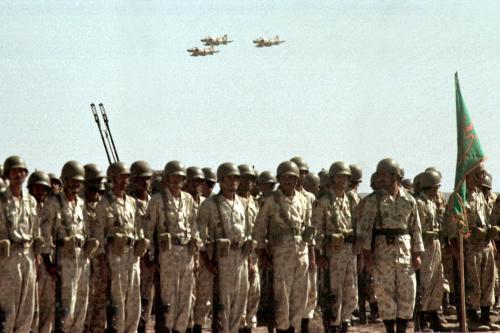
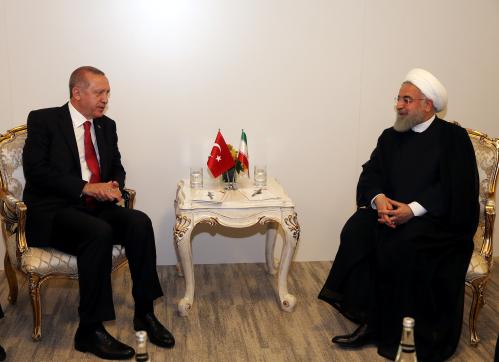


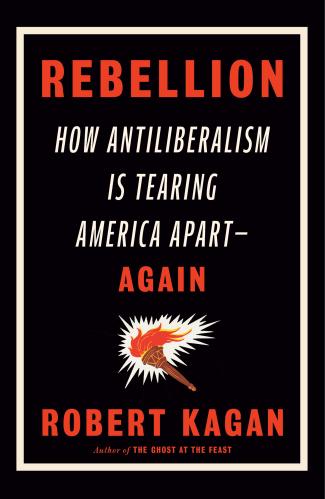
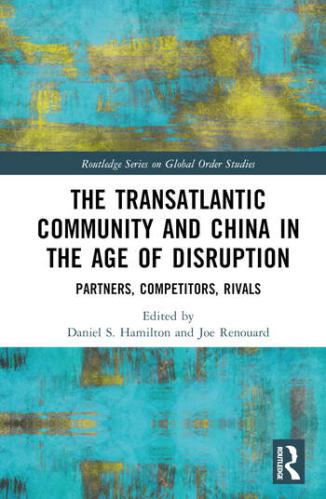

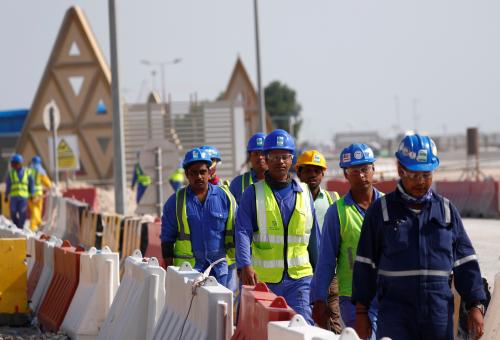
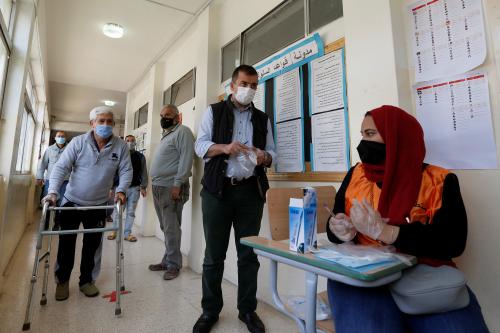
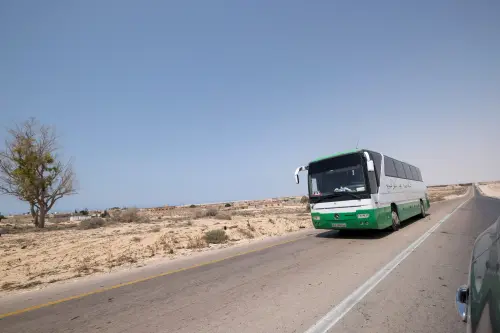
Commentary
Op-edThe Iran question, again
February 20, 2019